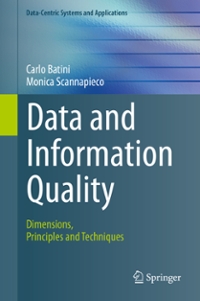Question
SAMPLE CODE: #include #include using namespace std; const int X1_INDEX = 1; const int X2_INDEX = 0; const int A_INDEX = 0; const int B_INDEX
SAMPLE CODE:
#include
const int X1_INDEX = 1; const int X2_INDEX = 0; const int A_INDEX = 0; const int B_INDEX = 1; const int ROOTS = 2; const int C_INDEX = 3; const int COEFFS = 3;
void GetCoefficients(double a, double b, double c); // Get the coefficients for the Quadratic equation. // @param a, b, c reads the coefficients
static bool SolveQuadratic(double a, double b, double c, double *px1, double *px2); // Solve the quadratic equation represented by a, b, c as coefficients // @param a, b, c are the coefficients // @param px1, px2 are the pointers to the roots // @return true if the roots are real or false when imaginary.
static void DisplayRoots(double x1, double x2, bool isReal); // Display the roots using isReal to determine how to print.
// There are problems with this code. Problems that may cause fatal // errors, but probably not. Open www.opengdb.com in another window // and follow the instructions for debugging this lab. int main() { char retry; do { // Using arrays to store coeffs and solutions. double coeffs[COEFFS], solutions[ROOTS]; double *px1 = &solutions[X1_INDEX]; // Use pointers in SolveQuadratic double *px2 = &solutions[X2_INDEX]; bool isReal = true;
// Read the coefficients GetCoefficients(coeffs[A_INDEX], coeffs[B_INDEX], coeffs[C_INDEX]);
// Solve the equation isReal = SolveQuadratic(coeffs[A_INDEX], coeffs[B_INDEX], coeffs[C_INDEX], px1, px2);
// Print the results. DisplayRoots(solutions[X1_INDEX], solutions[X2_INDEX], isReal);
cout << "Try again? (y or Y): "; cin >> retry; } while (retry == 'Y' || retry == 'y');
return 0; }
// GetCoefficient reads the coefficients // @param a, b, c reads the coefficients void GetCoefficients(double a, double b, double c) { cout << "Enter coefficients a, b and c: "; cin >> a >> b >> c; }
// SolveQuadratic solves the quadratic equation and returns the roots // @param a, b, c are the coefficients // @param px1, px2 are the pointers to the roots // @return true if the roots are real or false when imaginary. bool SolveQuadratic(double a, double b, double c, double* px1, double* px2) { double discriminant = b * b - 4 * a*c;
// Two different roots for this equation if (discriminant > 0) { *px1 = (-b + sqrt(discriminant)) / (2 * a); *px2 = (-b - sqrt(discriminant)) / (2 * a); return true; }
// One root satisfies both else if (discriminant == 0) { *(px1) = (-b + sqrt(discriminant)) / (2 * a); *px2 = *px1; return true; }
// Read part in px1, imaginary part in px2. else { *px1 = -b / (2 * a); *px2 = sqrt(-discriminant) / (2 * a); return false; } }
// // DisplayRoots - display 2 roots using information of real and imaginary. // @param x1 - always contains a root. // @param x2 - only contains a root when different or isReal false. // @param isReal - tells whether roots are real or imaginary. static void DisplayRoots(double x1, double x2, bool isReal) { if (isReal) { if (x1 != x2) { cout << "Roots are real and different." << endl; cout << "x1 = " << x1 << endl; cout << "x2 = " << x2 << endl; }
else if (x1 == x2) { cout << "Roots are real and same." << endl; cout << "x1 = x2 =" << x1 << endl; } } else { cout << "Roots are complex and different." << endl; cout << "x1 = " << x1 << "+" << x2 << "i" << endl; cout << "x2 = " << x1 << "-" << x2 << "i" << endl; }
}
Step by Step Solution
There are 3 Steps involved in it
Step: 1

Get Instant Access to Expert-Tailored Solutions
See step-by-step solutions with expert insights and AI powered tools for academic success
Step: 2

Step: 3

Ace Your Homework with AI
Get the answers you need in no time with our AI-driven, step-by-step assistance
Get Started


